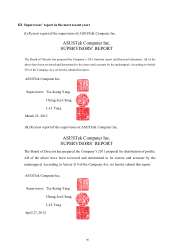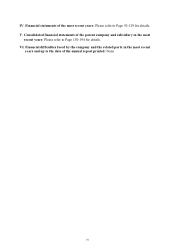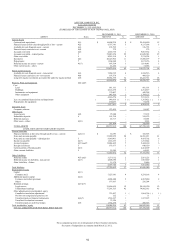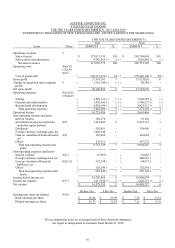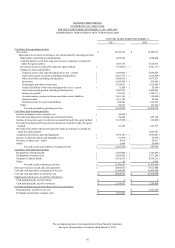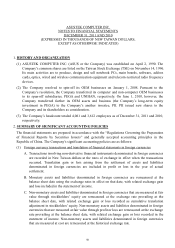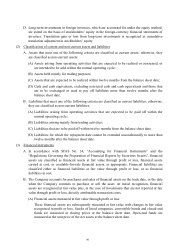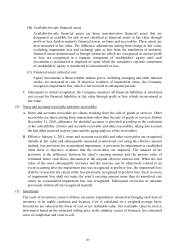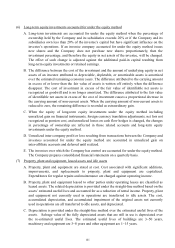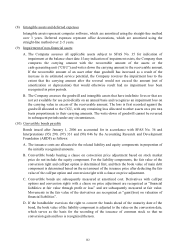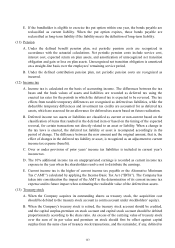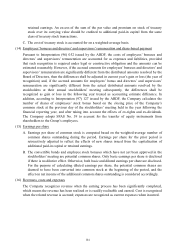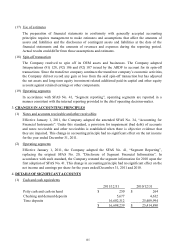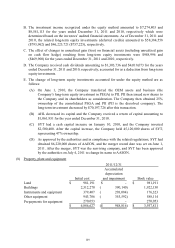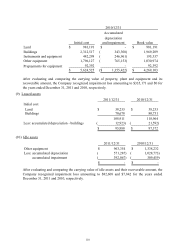Asus 2011 Annual Report Download - page 104
Download and view the complete annual report
Please find page 104 of the 2011 Asus annual report below. You can navigate through the pages in the report by either clicking on the pages listed below, or by using the keyword search tool below to find specific information within the annual report.
100
(B) Available-for-sale financial assets
Available-for-sale financial assets are those non-derivative financial assets that are
designated as available for sale or not classified as financial assets at fair value through
profit or loss, held-to-maturity financial assets, or loans and receivables. These assets are
then measured at fair value. The difference adjustments arising from change in fair value,
excluding impairment loss and exchange gain or loss from the translation of monetary
financial assets denominated in foreign currencies which are recognized in current profit
or loss, are recognized in a separate component of stockholders’ equity until such
investment is reclassified or disposed of, upon which the cumulative separate component
of stockholders’ equity is transferred to current profit or loss.
(C) Financial assets carried at cost
Equity investments without reliable market prices, including emerging and other unlisted
stocks, are measured at cost. If objective evidence of impairment exists, the Company
recognizes impairment loss, which is not reversed in subsequent periods.
C. Subsequent to initial recognition, the Company measures all financial liabilities at amortized
cost except for financial liabilities at fair value through profit or loss, which are measured at
fair value.
(4) Notes and accounts receivable and other receivables
A. Notes and accounts receivable are claims resulting from the sale of goods or services. Other
receivables are those arising from transactions other than the sale of goods or services. Before
December 31, 2010, allowance for doubtful accounts is provided according to the evaluation
of the collectibility of notes and accounts receivable and other receivables, taking into account
the bad debts incurred in prior years and the aging analysis of the receivables.
B. Effective January 1, 2011, notes and accounts receivable and other receivables are recognized
initially at fair value and subsequently measured at amortized cost using the effective interest
method, less provision for accumulated impairment. A provision for impairment is established
when there is objective evidence that the receivables are impaired. The amount of the
provision is the difference between the asset’s carrying amount and the present value of
estimated future cash flows, discounted at the original effective interest rate. When the fair
value of the asset subsequently increases and the increase can be objectively related to an
event occurring after the impairment loss was recognized in profit or loss, the impairment loss
shall be reversed to the extent of the loss previously recognized in profit or loss. Such recovery
of impairment loss shall not make the asset’s carrying amount more than its amortized cost
where no accumulated impairment loss was recognized. Subsequent recoveries of amounts
previously written off are recognized in profit.
(5) Inventories
The costs of inventories consist of those necessary expenditures incurred in bringing each item of
inventory to its usable condition and location. Cost is calculated on a weighted-average basis.
Inventories are valued at the lower of cost or net realizable value. Net realizable value by item is
determined based on the estimated selling price in the ordinary course of business, less estimated
costs of completion and costs to sell.


